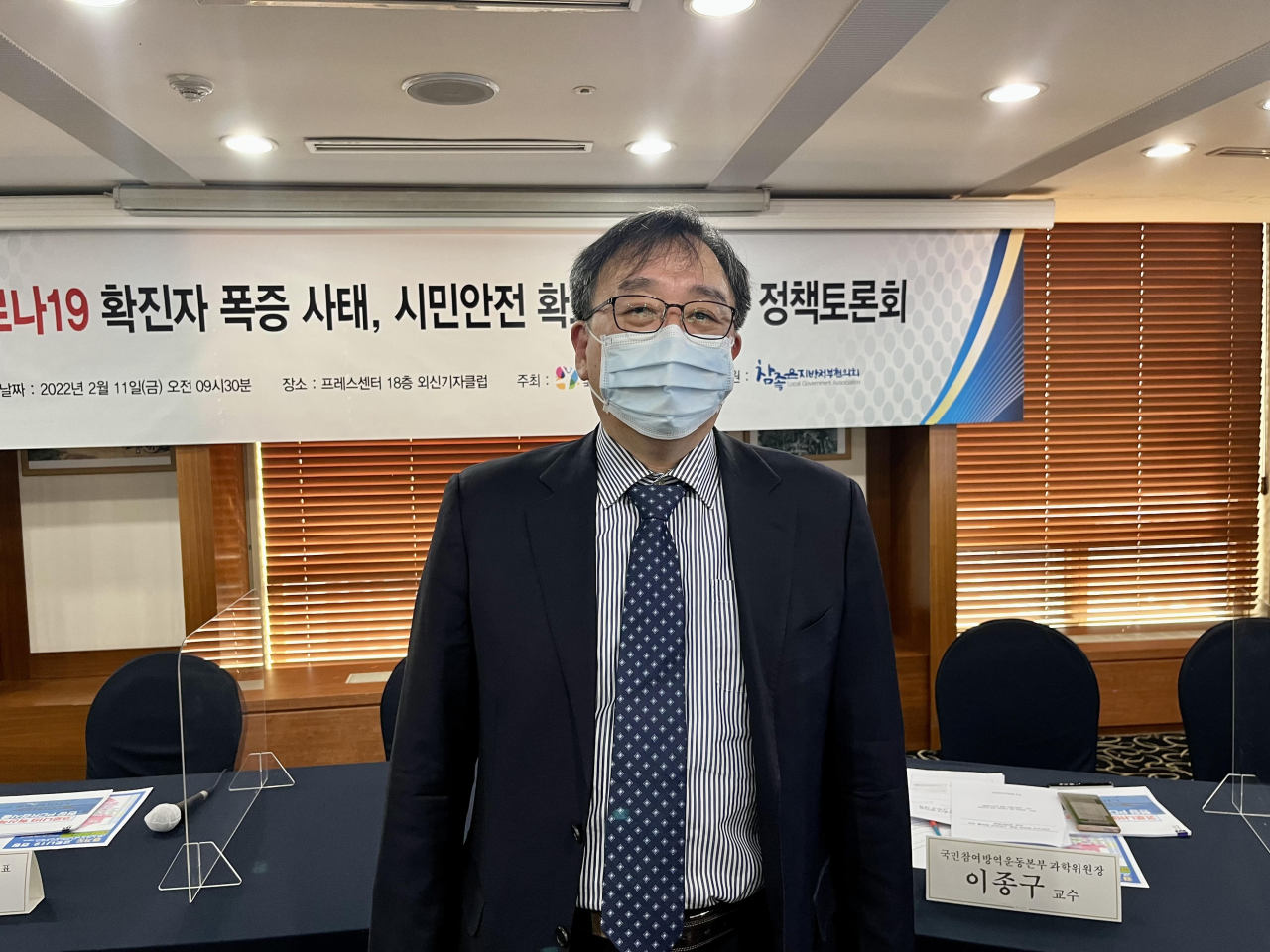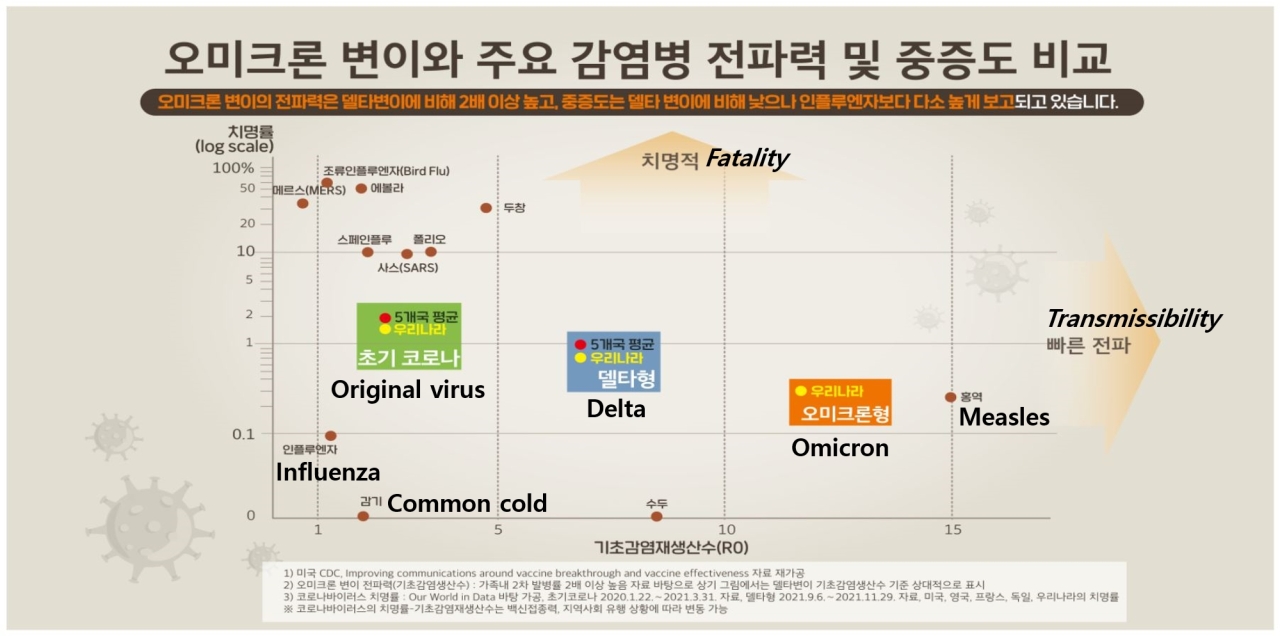Test, trace, treat must go on, says ex-Korea CDC chief
Flu comparisons misleading, omicron likely as severe as original Wuhan virus
By Kim ArinPublished : Feb. 11, 2022 - 17:09

Health authorities were wrong to make omicron out to be flu-like in its impact, according to the former head of the Korea Centers for Disease Control and Prevention, who says the country should bring back efforts to slow the spread to turn around the worst.
Speaking at a conference Friday organized by a COVID-19 civic group associated with the Consumers Union of Korea, Dr. Lee Jong-koo, who led the national health protection agency during the 2009 swine flu pandemic, said the Korean government may have bet on omicron’s “milder” severity too early on.
The Ministry Health and Welfare said Feb. 4 the country may start treating omicron like flu. Following that announcement Cheong Wa Dae officials told news outlets health authorities were preparing for a transition to the disease “going endemic.”
In the last week of January, the Ministry of Health and Welfare said based on the analysis of cases here so far, omicron was only one-fifth as deadly as delta. The case fatality rate for omicron was 0.16 percent, while for delta it was 0.8 percent.
Then a week later, on Tuesday, the ministry corrected its initial announcement and said omicron was turning out to be one-third, as opposed one-fifth, as fatal as delta.
“So it’s not possible to treat omicron like we do the seasonal flu, no,” said Lee. He added that contrary to the flu comparisons, latest findings suggest omicron’s severity is close to that of the original virus first found in Wuhan, China.
On the Korea Disease Control and Prevention Agency’s Jan. 24 analysis that suggested the severity of COVID-19 was decreasing variant after variant, Lee said, “This has turned out to be inaccurate.”
The graph showed omicron’s case fatality rate was lower than delta’s, and delta’s lower than that for the original virus found in Wuhan.
“Omicron not only spreads much faster than earlier variants, it is also likely to cause severe disease than the government hoped,” he said.

He said Korea no longer had strategy to bring down the patient numbers as the government abandons TTIQ -- test, trace, isolation, quarantine. So that foreshadows a greater burden for hospitals in the coming weeks, he said.
Omicron has spread across Korea “more than 10 times as rapidly as delta did,” he said. “In about 2 1/2 months since omicron was first detected in Korea, daily case numbers have jumped to 50,000. By comparison, delta, which was first spotted here in April, peaked at around 7,000.”
“The government seems to have designed the omicron response strategy around the assumption that hospital admissions would not increase as much,” he said.
But what were left out of that calculation was the near inevitability of omicron spreading to people requiring special medical attention, like pregnant women, large pool of diabetic patients, people coming down with conditions that need emergency surgery like appendicitis.
“While setting up beds for COVID-19 treatment, we haven’t prepared our hospitals for COVID-positive patients who may need to be given non-COVID procedures,” he said. “The result of this unpreparedness will be more preventable deaths.”
He said while South Korea and the UK have relaxed their pandemic-related restrictions in response to omicron, countries like Singapore and Germany were doing the opposite.
"Rather than adhering to the initial plan, Korea should respond more flexibly and make corrections along the way," he said.
He said that if the authorities want to slow the march of the omicron surge, a return to the conventional ways was probably unavoidable.
“Test, trace, treat must continue, because there really is no other choice.”
Vaccine effectiveness, as measured by neutralizing antibody levels, wanes after six months.
“So we can’t count on high vaccine rates to act as a sufficient buffer. All evidence now shows that three doses are necessary for protection,” he said.
Speaking at the same conference, Dr. Oh Ju-hwan, professor of public health policy at Seoul National University, said the government stance on omicron was self-contradictory.
“Two conflicting messages are coming from the government. One is that (omicron) is similar to the flu and that it’s OK to go about our normal lives. In fact government messaging so far has made the virus out to be as unthreatening as the common cold, not even so much as the flu,” he said.
And yet on the other hand, seemingly ineffective measures that restrict social and economic activities like rapid test-requirements for unvaccinated people were still being reinforced.
“So which is it?” he asked, adding that this inconsistency was causing confusion for people as well as the front lines.
Dr. Hong Yun-chul of Korean Society for Preventive Medicine said recent policy moves suggest Korea is abandoning its attempts to control the pandemic.
He pointed out that from the third week of January, when omicron was officially declared the dominant version of COVID-19 here, the government stopped monitoring the proportion of cases occurring among traced contacts -- a key marker for sucessful disease surveillance.
“Out of the many scenarios on how we could handle the situation, the direction of our policies should be to save as many lives as possible, rather than putting them at risk.”
By Kim Arin (arin@heraldcorp.com)




![[Herald Interview] 'Amid aging population, Korea to invite more young professionals from overseas'](http://res.heraldm.com/phpwas/restmb_idxmake.php?idx=644&simg=/content/image/2024/04/24/20240424050844_0.jpg&u=20240424200058)












![[KH Explains] Korean shipbuilding stocks rally: Real growth or bubble?](http://res.heraldm.com/phpwas/restmb_idxmake.php?idx=652&simg=/content/image/2024/04/25/20240425050656_0.jpg&u=)

